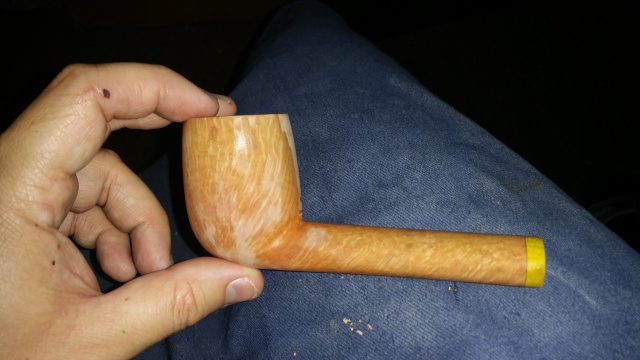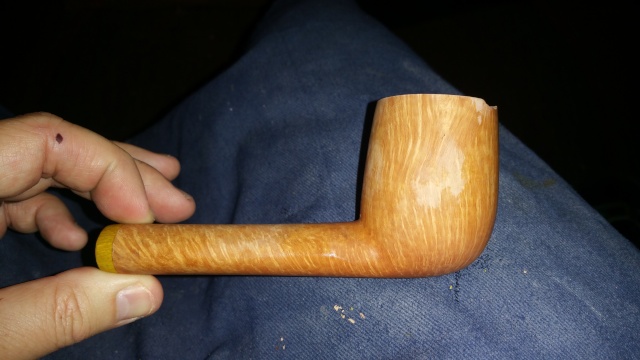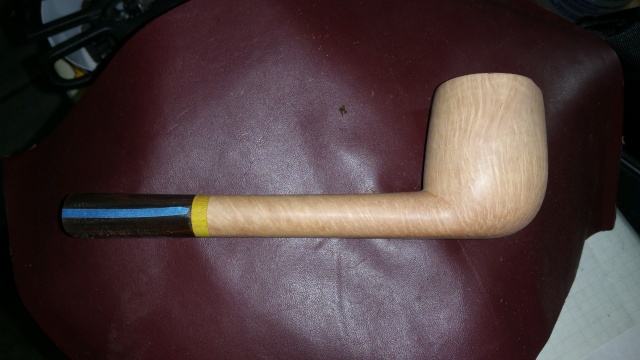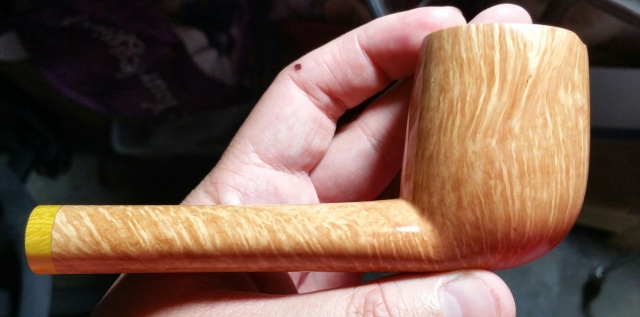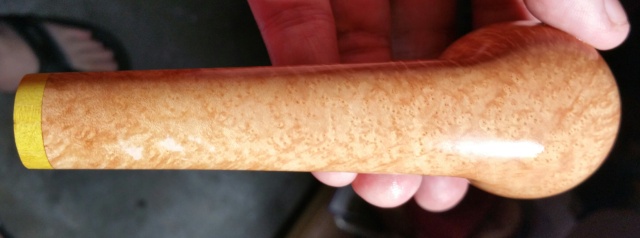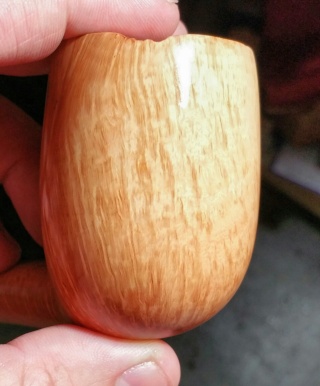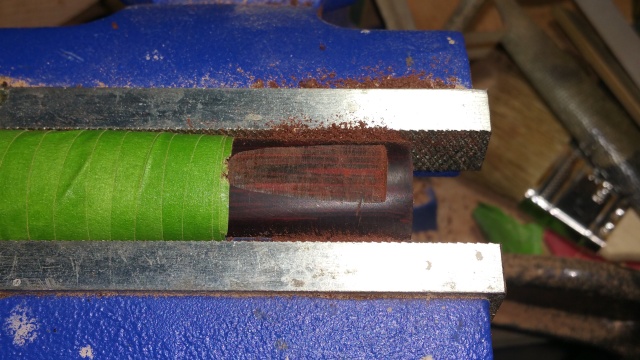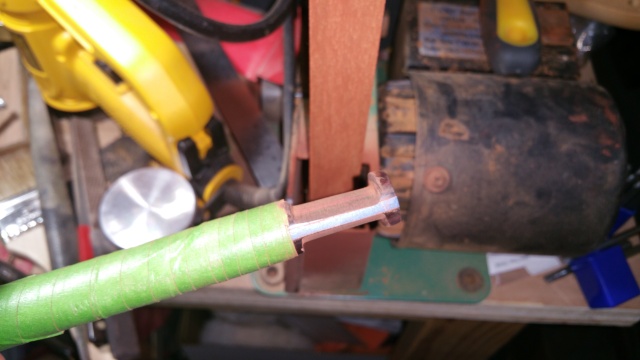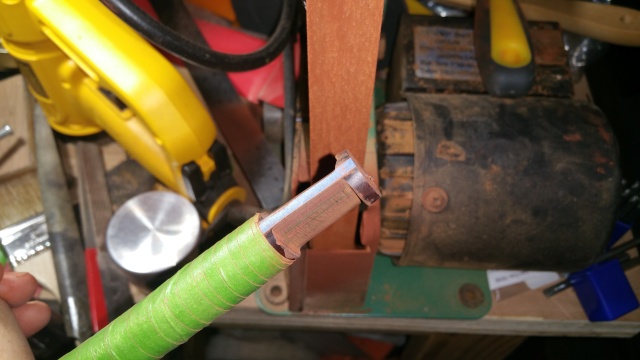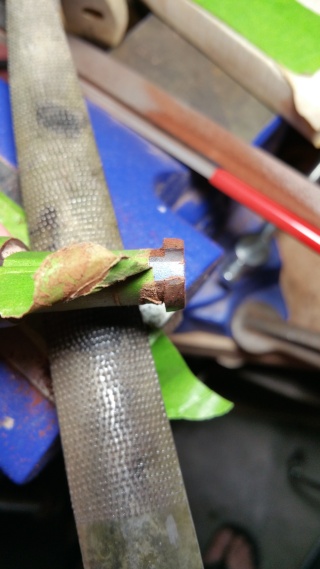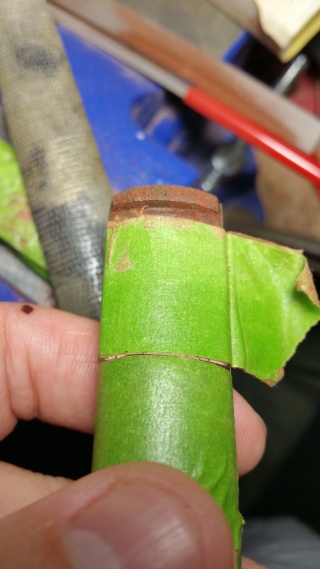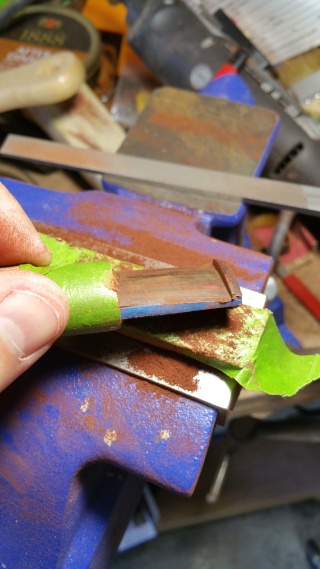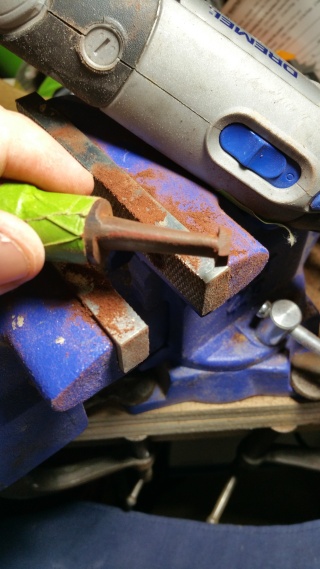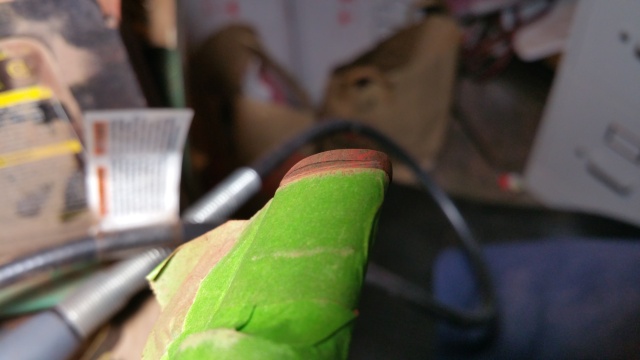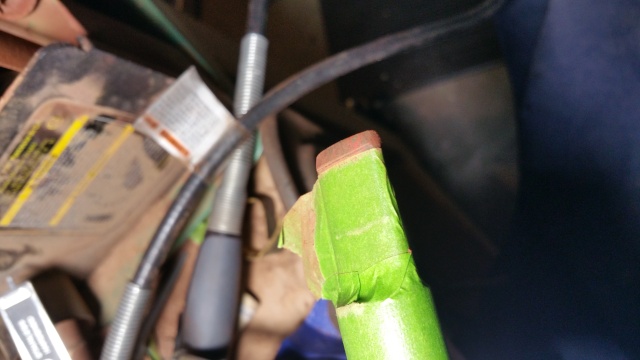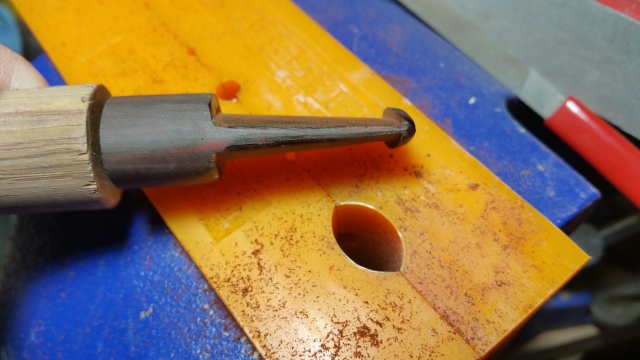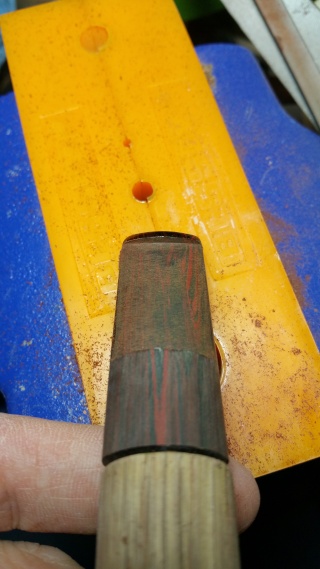Ok, setting the stummel aside for a bit, I'll get the stem started. It's going to be cumberland, with a delrin tenon. Chucking up a piece of 22mm rod stock, I part it to length (I know, a little backwards). Mostly I don't want the stem
too long.
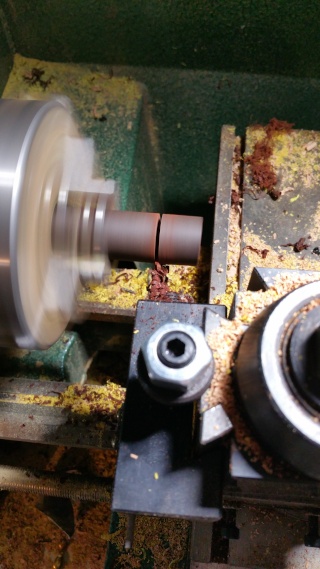
Next thing is to face that cut side to prep for the tenon. I first use a regular turning tool (not shown) to make it square, then this custom ground shear bit. It makes only right-to-left cuts as it's angled, but it can make a lot smoother surface when at a lower speed without machining marks. I set it to be perpendicular to the end and move it from back to front towards me. Unfortunately, it's not perfect as it has too much of a facet on the front, but it did the prep job enough.
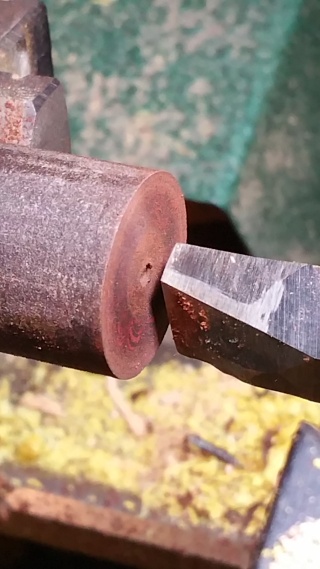
I drill the 5/16" mortise for the stem side of the tenon first then follow that with the airway @ 5/32" tapered, stopping about 1/2" from the button end of the stem.

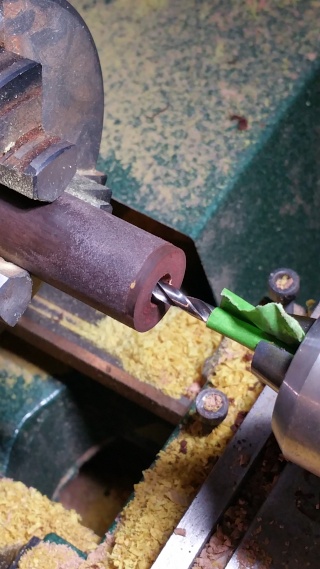
Incidentally, you know it's good vulcanite/ebonite/cumberland if it smells like rotten eggs! After that, I polish the face with some white diamond and a rag @ 1000RPM on the lathe. Ooooo shiny! 8)

Flip the stem over and drill all the rest of the way through from the button side with a <1/8" bit. I didn't photo this part, but you'll see it later when i show cutting the button.
Next we cut a short piece of delrin and drill it through at the same diameter as the airway (5/32"). I countersink the end that will go into the stem mortise. I prep a bead of 5 minute epoxy on a piece of paper. Don't forget to scuff the ends of the delrin or it won't stick. But also, don't over-scuff cause the rest will be the part you can see when you pull out the stem. (I ended up redoing it last night because I didn't like how it was looking.)

Press it in a vise of some sort to let it get snug. Now you wait for the "magic minute" where it is still pliable, but not sticky. Peel off the squeeze out and clean it up.
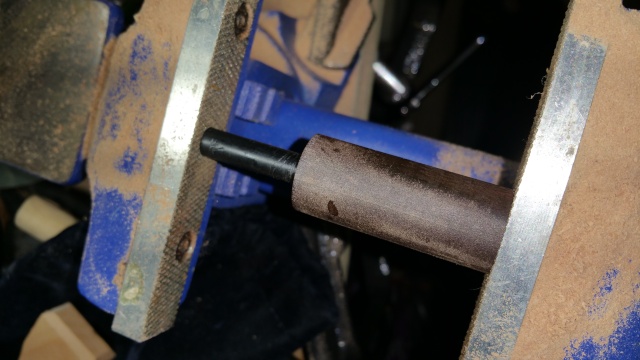
Finally, chuck the stem back up and cut the tenon to length, then countersink. It's time to check fit:
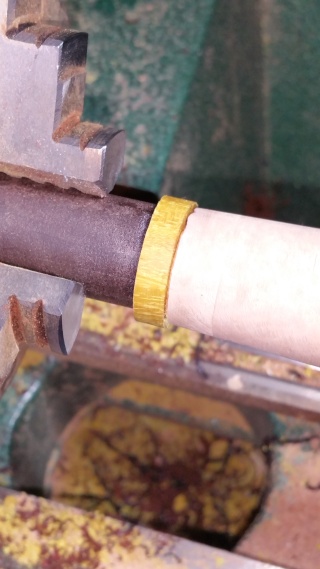
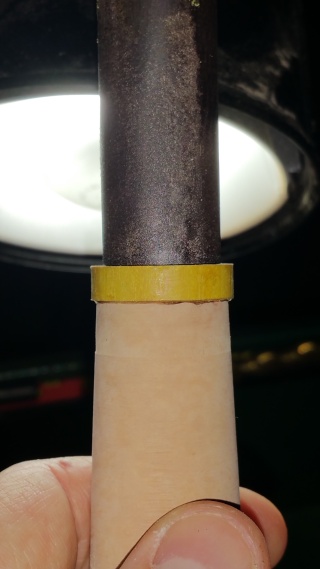
No gaps! Looks good to me! If you've done a good job cleaning the epoxy off the tenon, there should be no need to countersink the shank face, but sometimes you do. I didn't show it, but that's a little detail you'll notice on some integral tenons (e.g. Dunhill) that still have the fillet in the stem/tenon corner.
Time to unchuck it. Here's the airway view all the way through.
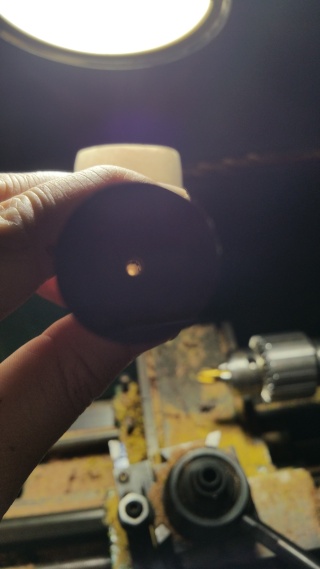
Think it'll pass a cleaner? You bet! Here's the parting shot with the handsewn bag destined for this pipe:
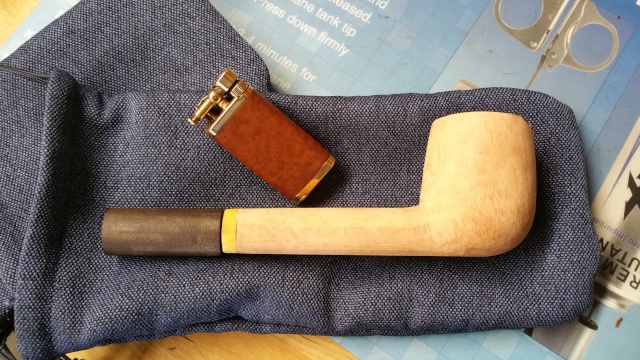
Now we can get back to sanding! Details next time!


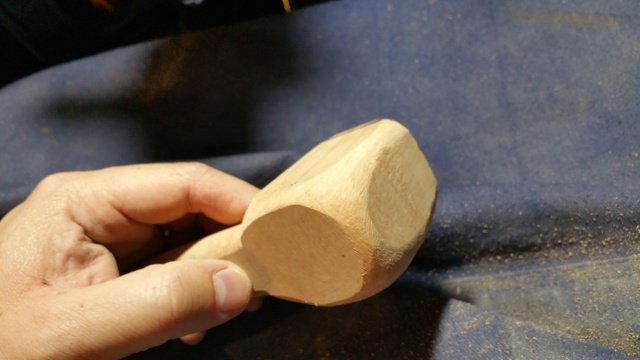
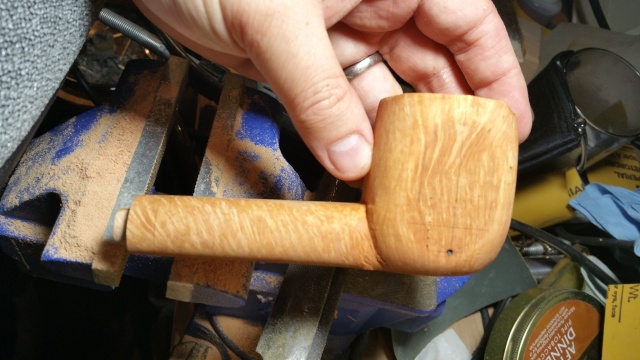
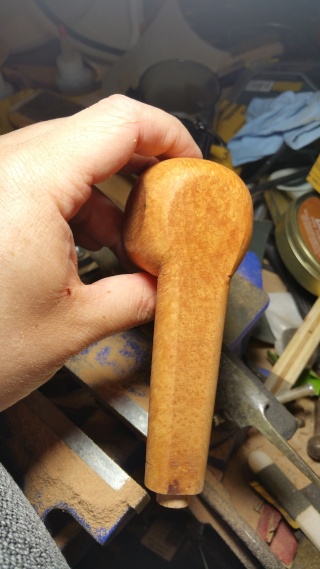






























![[3-Size Set] Copper Pipe Cleaner for Drill, Clean 1/2, 3/4, 1-in Copper Pipes & Tubes for Soldering, 3 Tube Cleaning Brushes, Model InerLok050, 075, 100, w/ Stainless-Steel Wire Bristles & 1/4” Shank](https://m.media-amazon.com/images/I/41QVxunlqML._SL500_.jpg)



